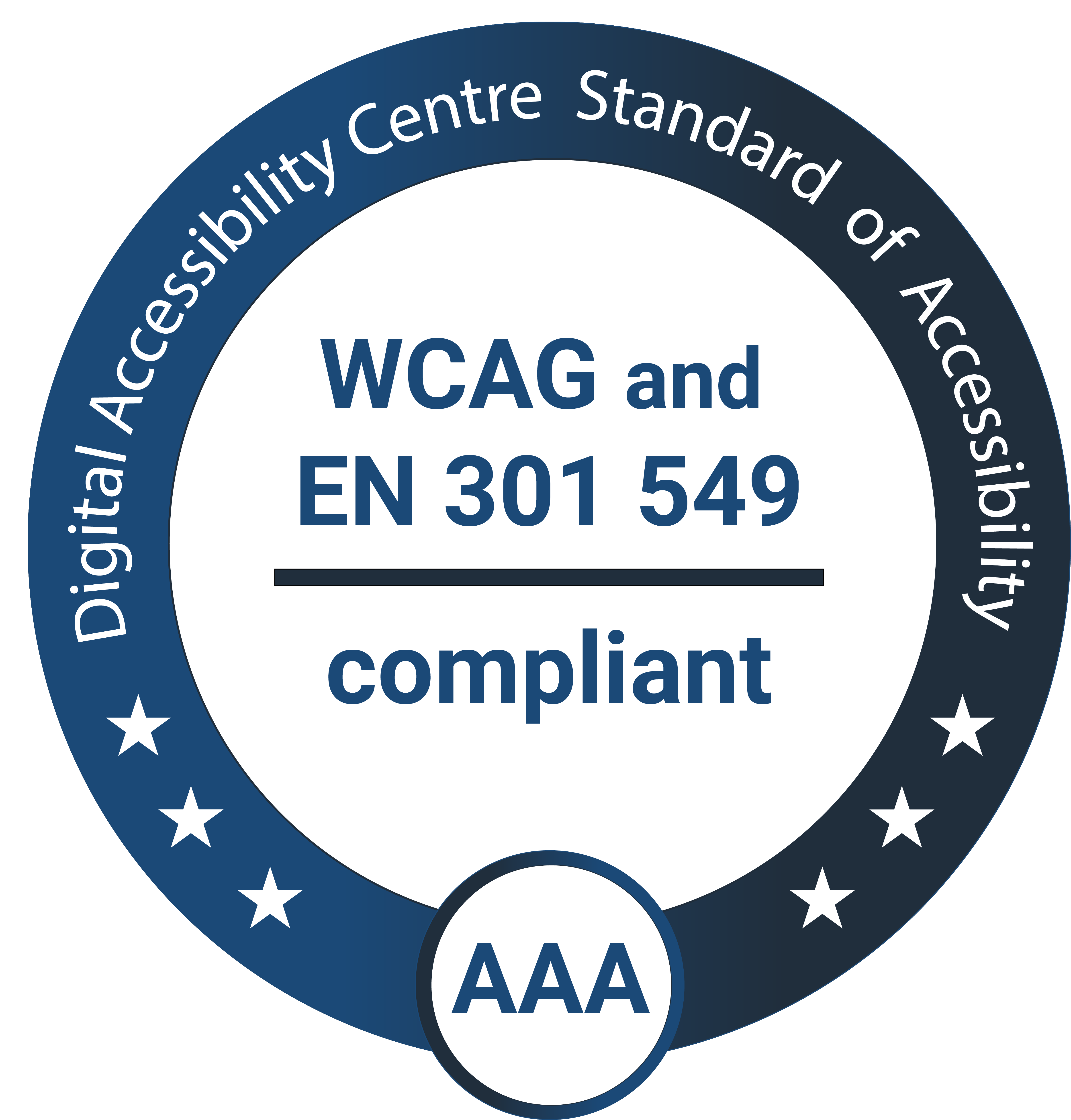EN 301 549 for WCAG Users
The European Accessibility Act (EAA) will be in effect soon, mandating that web sites associated with a range of markets in Europe must support accessibility for users with disabilities. EN 301 549 is a technical standard that describes how web sites and other types of information and communication technology (ICT) should meet the requirements of the EAA. Although the standard is not in its final form, the current public version is the best available guide for how to meet EAA requirements.
EN 301 549 provides technical requirements for ICT hardware and telecommunication, and also addresses web content, digital documents, and software. To ensure compatibility with existing guidance, it incorporates Web Content Accessibility Guidelines (WCAG), which has been a web accessibility standard for many years. Requirements for non-web documents and software incorporate a companion document, Guidance on Applying WCAG 2 to Non-Web Information and Communications Technologies (WCAG2ICT).
Accessibility professionals working on web accessibility are familiar with the content and structure of WCAG, and many organisations have established procedures centred around these documents. Given that WCAG is incorporated into EN 301 549, are the requirements for web content any different from WCAG? This article compares the standards and shows how to find and work with requirements that are not in WCAG.

You still have to use WCAG
The incorporation of WCAG into EN 301 549 is straightforward: Section 9 references WCAG in its entirety to conformance level AA. Each requirement in this section points to a corresponding WCAG requirement, and simply says “follow that”. This means that developers working on web conformance end up working directly with WCAG anyways. Conforming to WCAG at conformance level AA, then, is equivalent to conforming to section 9 of EN 301 549.
Is that sufficient to conform to EN 301 549 overall? Sometimes, but usually not. The standard has sections addressing a variety of types of ICT, and also has a section with general requirements that apply to all ICT. A given ICT product may have features relating to more than one of these types, and must meet the applicable requirements for each type, as well as the core requirements.
For example, consider a web site that provides two-way voice and video communication, provides biometric authentication, and requires users to activate accessibility support. Some of the general requirements come into scope automatically, and the communication features bring another section of EN 301 549 into scope. Section 6 includes detailed requirements for real-time text, audio, and video support. Some of these overlap with WCAG, such as requirements to provide captions and audio descriptions. However, Section 6 of EN 301 549 goes well beyond this, with specific requirements for characteristics of accessibility features, and technical requirements for audio and video quality and transmission. To conform to EN 301 549, this web site must meet WCAG plus all those additional requirements.
Note: The current version of EN 301 549 references WCAG 2.1. Since it was published, WCAG 2.2 was finalised, and the next draft of EN 301 549 is likely to reference that. We recommend migrating to WCAG 2.2 to be ready for this.
WCAG2ICT
The way WCAG2ICT is incorporated into the standard is different from the way WCAG is incorporated. Sections 10 (non-web documents) and 11 (software) of EN 301 549 reference WCAG2ICT, which interprets the level A and AA success criteria for application to digital documents and software. Instead of direct references to clauses, though, the wording of each section has been adapted and incorporated into the text of EN 301 549. This means that it is necessary to meet the EN 301 549 version of the requirements, and overlooking something by using only WCAG2ICT could lead to an error.
Another difference in how WCAG2ICT was incorporated is that EN 301 549 includes requirements that go beyond WCAG2ICT, in sections 10.5 - 10.6 and 11.5 - 11.8. For software, this means captions and audio descriptions should not interfere with other visual and auditory tracks. Software must provide and document interoperability with assistive technology, and respect user preferences. Software used to create content also has some authoring tool requirements. To conform with EN 301 549, software and documents must meet these requirements in addition to the ones that come from WCAG2ICT.
Closed functionality
One of the most easily overlooked requirements in EN 301 549, perhaps, is section 5.1 on closed functionality. Closed functionality means that a product does not allow assistive technology to provide support to the user, so the product must build that feature into its own feature set. Generally, web content is considered “open functionality” with well-established ways to interface with assistive technologies, but web content can incorporate features that do not by default provide this support. For example, a custom media player might not provide accessible controls, a game widget might not expose its features to accessibility APIs, or custom data input controls might not provide the default user support.
WCAG and EN 301 549 handle closed functionality differently. WCAG requires a text alternative for closed content. Section 5.1 of EN 301 549 requires that the developer directly implement any accessibility feature where content does not support a platform accessibility feature. Requirements address non-visual access, text enlargement, auditory output, non-keyboard input, and access without speech. Because WCAG is incorporated into EN 301 549, the combined requirement is both to directly implement accessibility features and to provide a text alternative.
These days, while there is still much content on the web that would meet the definition of “closed functionality”, there are many ways to build digital objects for deployment on the web that can work with platform accessibility services.
Conclusion
Some users of WCAG and WCAG2ICT may find that there are not many additional requirements for their sites in EN 301 549. Others, however, may have substantial additional requirements. To learn more about EN 301 549, the article How to use the EN 301 549 standard describes the structure and provides a comprehensive summary of the requirements.



